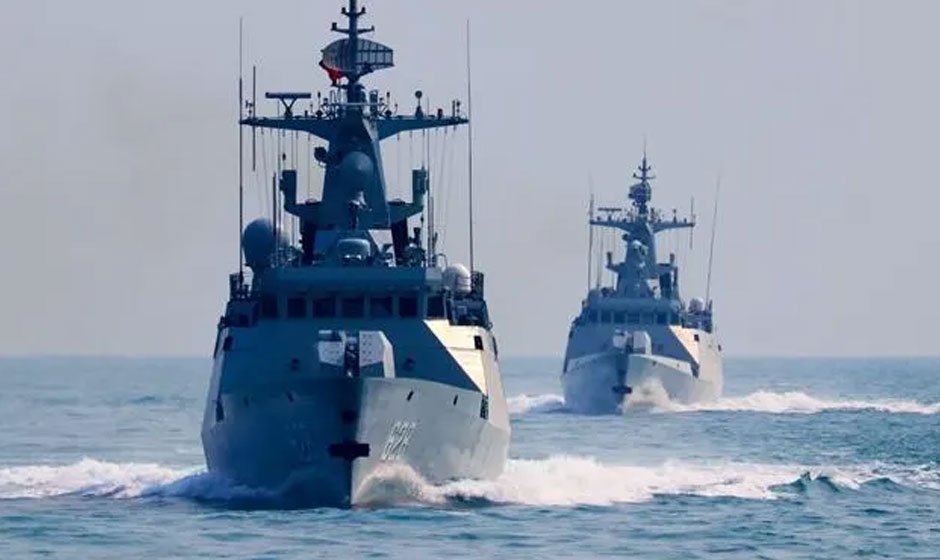Introduction
In the realm of naval forces, the number of warships a nation possesses is a crucial factor in assessing its military capabilities. Recently, the U.S. Defense Department released a report confirming that China boasts the largest navy in the world, outnumbering the U.S. fleet in terms of hulls. However, a closer examination reveals a significant difference in the size of the warships between the two countries. In this article, we will delve into the implications of this disparity and explore the reasons behind the variation in the fleets of the two naval powerhouses.
China’s Vast Navy: Numbers and Projections
The People’s Liberation Army Navy (PLAN) currently maintains an impressive fleet of 355 front-line ships organized into three fleets along the Chinese coast. On the other hand, the U.S. Navy (USN) operates 305 front-line ships, distributed roughly 60-40 between the Pacific and Atlantic Fleets. While China’s numerical advantage is evident, projections suggest that the PLAN is on track to further expand its fleet by adding approximately 70 more warships by 2030. In contrast, the USN’s growth is expected to be relatively modest, with an estimated addition of just 42 warships during the same period.
Size Matters: The Disparity in Displacement
Despite China’s numerical advantage, it is essential to consider the disparity in the size of the warships between the two navies. On average, American warships are considerably larger than their Chinese counterparts. The smallest USN warship, the Littoral Combat Ship, displaces 3,000 tons of water, while the median ship, an Arleigh Burke-class destroyer, displaces up to 9,500 tons. In contrast, the smallest PLAN ship, the Type 056 corvette, displaces 1,500 tons, and the median ship, a Type 045 frigate, displaces around 4,000 tons.
The Impact of Tonnage
The tonnage of a warship plays a vital role in its combat capabilities. Larger vessels generally possess more weaponry and are better equipped to withstand damage compared to smaller ships. However, it is important to understand that the size difference between American and Chinese warships is not solely a consequence of strategic decisions.
Geopolitical Considerations: Forward Basing and Logistics
One significant factor influencing the size disparity between the two fleets is the concept of forward basing and logistics. U.S. warships, with the exception of those stationed in Japan, often have to cover vast distances from their home ports in San Diego, Hawaii, or Washington State to reach potential battle zones in the Philippine and China Seas. This necessitates larger ships with greater fuel capacity and maintenance capabilities.
On the other hand, China’s strategic positioning allows its warships to operate within a few hundred miles from the Chinese coast to reach the same battle zones. Consequently, the PLAN can effectively deploy a substantial number of corvettes and frigates, which would be impractical for the U.S. fleet due to the long distances they must cover.
Past and Future of U.S. Fleet Architecture
In the past, when the U.S. Navy had access to Subic Bay, a major naval base in The Philippines, it could deploy smaller ships like 4,000-ton Knox-class frigates. However, the withdrawal from Subic Bay in 1992 as part of the post-Cold War drawdown forced the U.S. Navy to adopt larger surface combatants with extended range capabilities.
The possibility of establishing forward basing agreements, similar to the one with Singapore, might allow the U.S. fleet to deploy more smaller ships in the future. However, this approach has its challenges, as supporting smaller ships forward would incur significant expenses.
Conclusion
In conclusion, while China boasts a larger number of warships than the USA, the size disparity between the two fleets is a crucial aspect to consider. The strategic differences in deployment distances and logistics requirements have shaped the fleet architectures of both nations. The U.S. fleet, with its emphasis on larger displacements, continues to prioritize extended range capabilities. Meanwhile, China’s closer proximity to potential battle zones allows it to deploy numerous smaller warships.
As the geopolitical landscape evolves, it remains to be seen whether the U.S. Navy will opt for a more diversified fleet architecture, incorporating both large and small warships. The delicate balance between numbers and size will continue to play a pivotal role in shaping the naval dynamics between these two maritime powers.









